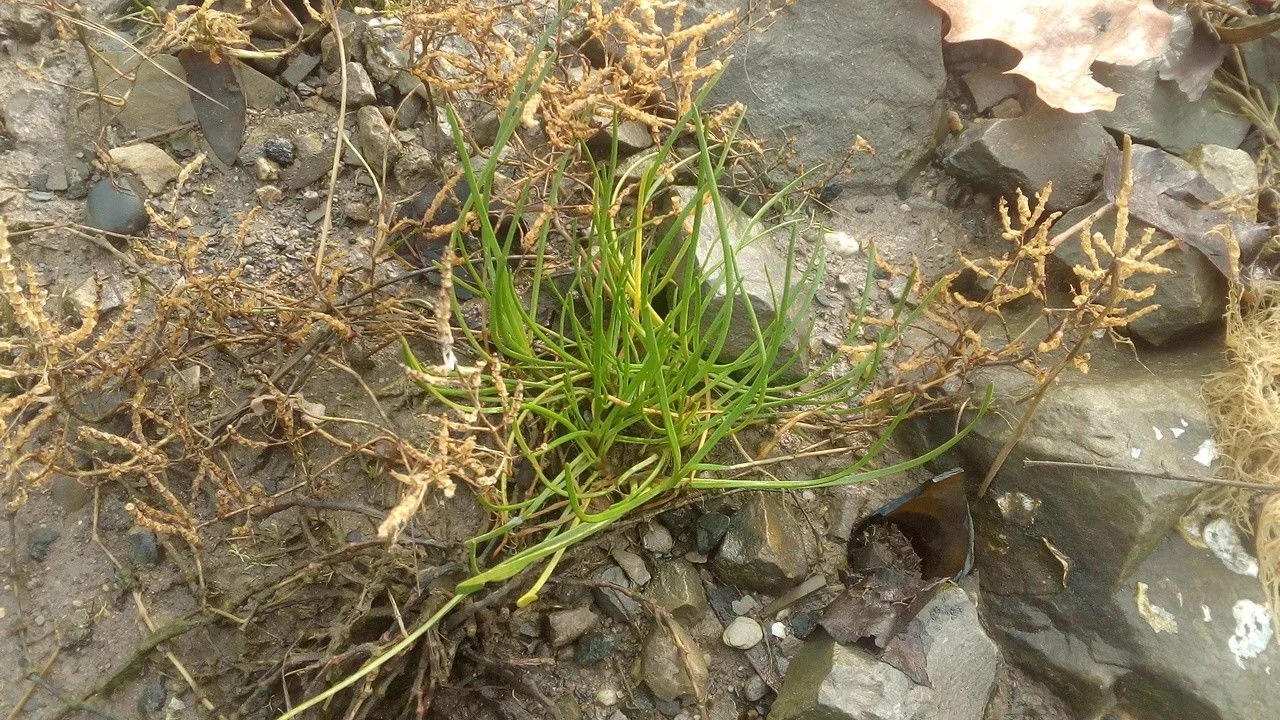
Author: L.
Bibliography: Sp. Pl.: 105 (1753)
Year: 1753
Status: accepted
Rank: species
Genus: Triglochin
Vegetable: False
Observations: Temp. Northern Hemisphere, S. South America
Sea arrow-grass, scientifically known as Triglochin maritima, is a fascinating plant species that belongs to the family Juncaginaceae. First described by the eminent botanist Carl Linnaeus in 1753, Sea arrow-grass derives its common name from the long, narrow, arrow-like leaves that characterize the plant.
This hardy species thrives in the temperate regions of the Northern Hemisphere as well as in parts of southern South America. Growing predominantly in coastal marshes and salt flats, Sea arrow-grass is well-adapted to saline conditions which often prove challenging for other plant species. Its presence in such environments plays a crucial role in maintaining the ecosystem’s health and stability.
Triglochin maritima exhibits a unique growth pattern, with dense clumps of slender leaves forming from a basal rosette. These leaves can grow anywhere from 10 to 50 centimeters in length, showcasing a rich green hue which can often turn a darker shade toward the tips. During the blooming season, which typically spans from late spring to early summer, Sea arrow-grass produces spike-like inflorescences peppered with small, inconspicuous flowers. These flowers are generally greenish to purple and gradually give way to elongated, capsule-like fruits containing numerous tiny seeds.
The ecological importance of Sea arrow-grass cannot be overstated. It serves as a crucial food source for various wildlife species, including birds and small mammals, which feed on its nutrient-rich foliage and seeds. Additionally, the plant’s root system helps to stabilize the soil in coastal marshes, thereby preventing erosion and supporting other plant life in the vicinity.
In summary, Triglochin maritima, or Sea arrow-grass, is a robust and versatile plant that plays an integral part in its native habitats in the temperate Northern Hemisphere and southern South America. Its adaptive characteristics, coupled with its ecological significance, make it a noteworthy subject within the botanical community.
Eng: arrow-grass, arrowgrass, sea arrow-grass, sea arrowgrass, seaside arrow-grass, seaside arrowgrass, shore arrowgrass, common arrowgrass, common bog arrowgrass
Deu: strand-dreizack
Dan: strand-trehage
Swe: havssälting
Lav: jurmalas azloks
Nld: schorrenzoutgras
Fra: troscart maritime
Sme: mearrasáltu
Ita: giucastrello marino
Cym: saethbennig arfor, saethbennig y morfa
En: Sea arrow-grass, Arrow-grass, Seaside arrow-grass, SHORE ARROWGRASS, Seaside arrowgrass, Arrowgrass, Sea arrowgrass, Common arrowgrass, Common bog arrowgrass
Da: Strand-trehage
Nl: Schorrenzoutgras
Fr: Troscart maritime
De: Strand-Dreizack
It: Giucastrello Marino
Lv: Jurmalas azloks
Se: Mearrasáltu
Sv: Havssälting
Cy: Saethbennig Arfor, Saethbennig y Morfa
Taken Jul 5, 2018 by Tela Botanica − Liliane Roubaudi (cc-by-sa)
Taken Jul 5, 2018 by Tela Botanica − Liliane Roubaudi (cc-by-sa)
Taken Jul 5, 2018 by Tela Botanica − Liliane Roubaudi (cc-by-sa)
Taken Jul 5, 2018 by Tela Botanica − Liliane Roubaudi (cc-by-sa)
Taken Jul 5, 2018 by Tela Botanica − Liliane Roubaudi (cc-by-sa)
Taken May 10, 2015 by Tela Botanica − Florent Beck (cc-by-sa)
Taken May 10, 2015 by Tela Botanica − Florent Beck (cc-by-sa)
Taken May 10, 2015 by Tela Botanica − Florent Beck (cc-by-sa)
Taken Jun 21, 2016 by Tela Botanica − Liliane ROUBAUDI (cc-by-sa)
Taken Jun 21, 2016 by Tela Botanica − Liliane ROUBAUDI (cc-by-sa)
Taken May 10, 2015 by Tela Botanica − Florent Beck (cc-by-sa)
Taken May 10, 2015 by Tela Botanica − Florent Beck (cc-by-sa)
Taken Jun 4, 2016 by Tela Botanica − Françoise MADIC (cc-by-sa)
Taken Jun 4, 2016 by Tela Botanica − Françoise MADIC (cc-by-sa)
Taken Sep 1, 2016 by Tela Botanica − Florent BECK (cc-by-sa)
Taken Dec 17, 2016 by Tela Botanica − Florent BECK (cc-by-sa)
Taken Mar 15, 2016 by Tela Botanica − Florent BECK (cc-by-sa)
Taken Jun 21, 2016 by Tela Botanica − Liliane ROUBAUDI (cc-by-sa)
Taken Jul 5, 2018 by Tela Botanica − Liliane Roubaudi (cc-by-sa)
Taken Jul 5, 2018 by Tela Botanica − Liliane Roubaudi (cc-by-sa)
Taken Jan 1, 1900 by EOL − Encyclopedia of Life (cc-by-nc-sa)
Taken Jun 13, 2013 by EOL − Steve Matson (cc-by-nc)
Taken Jan 1, 1900 by EOL − Encyclopedia of Life (cc-by-nc)
Taken Jan 1, 1900 by EOL − Encyclopedia of Life (cc-by-nc-sa)
Taken May 10, 2015 by Tela Botanica − Florent Beck (cc-by-sa)
Taken May 10, 2015 by Tela Botanica − Florent Beck (cc-by-sa)
© copyright of the Board of Trustees of the Royal Botanic Gardens, Kew.
© copyright of the Board of Trustees of the Royal Botanic Gardens, Kew.
© copyright of the Board of Trustees of the Royal Botanic Gardens, Kew.
Growth habit: Graminoid
Ph maximum: 7.5
Ph minimum: 7.0
Light: 8
Atmospheric humidity: 6
Bloom months: [‘may’, ‘jun’, ‘jul’, ‘aug’, ‘sep’]
Soil nutriments: 5
Soil salinity: 6
Family: Myrtaceae Author: (F.Muell.) K.D.Hill & L.A.S.Johnson Bibliography: Telopea 6: 402 (1995) Year: 1995 Status:…
Family: Rubiaceae Author: Pierre ex A.Froehner Bibliography: Notizbl. Bot. Gart. Berlin-Dahlem 1: 237 (1897) Year:…
Family: Sapindaceae Author: Koidz. Bibliography: J. Coll. Sci. Imp. Univ. Tokyo 32(1): 38 (1911) Year:…
Family: Asteraceae Author: A.Gray Bibliography: Pacif. Railr. Rep.: 107 (1857) Year: 1857 Status: accepted Rank:…
Family: Fabaceae Author: Medik. Bibliography: Vorles. Churpfälz. Phys.-Ökon. Ges. 2: 398 (1787) Year: 1787 Status:…
Family: Aspleniaceae Author: (Cav.) Alston Bibliography: Bull. Misc. Inform. Kew 1932: 309 (1932) Year: 1932…